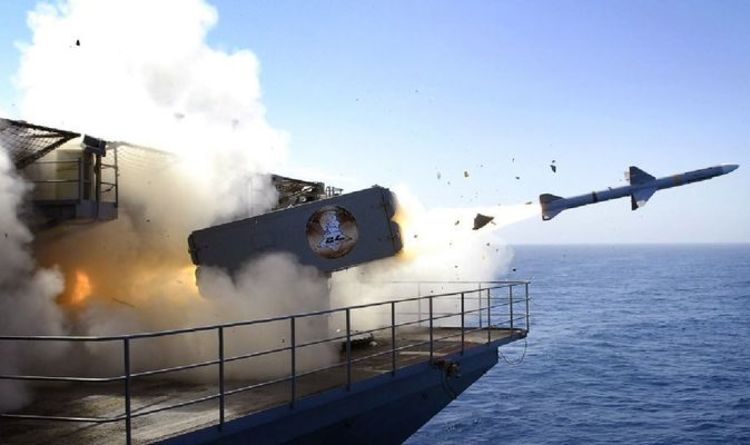South China Sea: Lorenzana on 'developing' relationships
When you subscribe we will use the information you provide to send you these newsletters.Sometimes they’ll include recommendations for other related newsletters or services we offer.Our Privacy Notice explains more about how we use your data, and your rights.You can unsubscribe at any time.
Military chiefs are developing plans to deploy troops on the ground to help multinational fleets target their missiles more accurately over longer distances. The moves are part of a broader US military strategy designed to counter Chinese attempts to assert its control over the disputed waters. In February, the US Navy carried out drills involving the USS Dwight D. Eisenhower aircraft carrier strike group.
As part of the exercises US Navy Seals were sent to establish forward bases to investigate intelligence provided by the strike group’s radars.
A researcher at the PLA Academy of Military Sciences warned that these ground troops could be used to gather extra information to help missile and air strikes.
Du Wenlong told China’s state TV channel CCTV: “If the Seals were deployed to an island, either from air or by boat, and to conduct various reconnaissance to locate targets, this information can help the strike group better attack targets and boost their strike precision.”
Mr Du’s analysis was echoed by a senior defence expert from the Rand Corporation.
Timothy Heath said that although the US exercise was designed with Russia in mind, the strategies being tested could be used against China.
He told the South China Morning Post that sending troops ahead to identify targets would help missile teams on board navy ships to deploy their weapons more accurately.
“This should also help improve the survivability of the same warships, since they will be able to launch their missiles from a longer distance,” Mr Heath said.
A key objective of the recent drill was to train US naval personnel in NATO procedures and communication methods.
This is seen as a crucial step, enabling American forces to better integrate with their allies and improve their joint combat capabilities.
The Biden administration is keen to rebuild alliances with close allies after relations were fractured under Donald Trump.
Major European allies such as the UK, Germany and France have committed to sending ships to the region.
DON’T MISS
South China Sea: Britain’s HMS Queen Elizabeth enters disputed waters [Insight]
South China Sea: Beijing sparks war fears with Taiwan [Reveal]
Calls for Biden to warn US will defend Taiwan from Beijing invasion [Analysis]
Last week, France sent its amphibious assault ship Tonnerre and frigate Surcouf through the disputed waters twice.
It is estimated that 60 percent of maritime trade passes through Asia, with the South China Sea carrying an estimated one-third of global shipping.
Its waters are particularly critical for China, Taiwan, Japan, and South Korea, all of which rely on the Strait of Malacca, which connects the South China Sea and, by extension, the Pacific Ocean with the Indian Ocean.
As the second-largest economy in the world with over 60 percent of its trade in value travelling by sea, China’s economic security is closely tied to the South China Sea.
Source: Read Full Article





